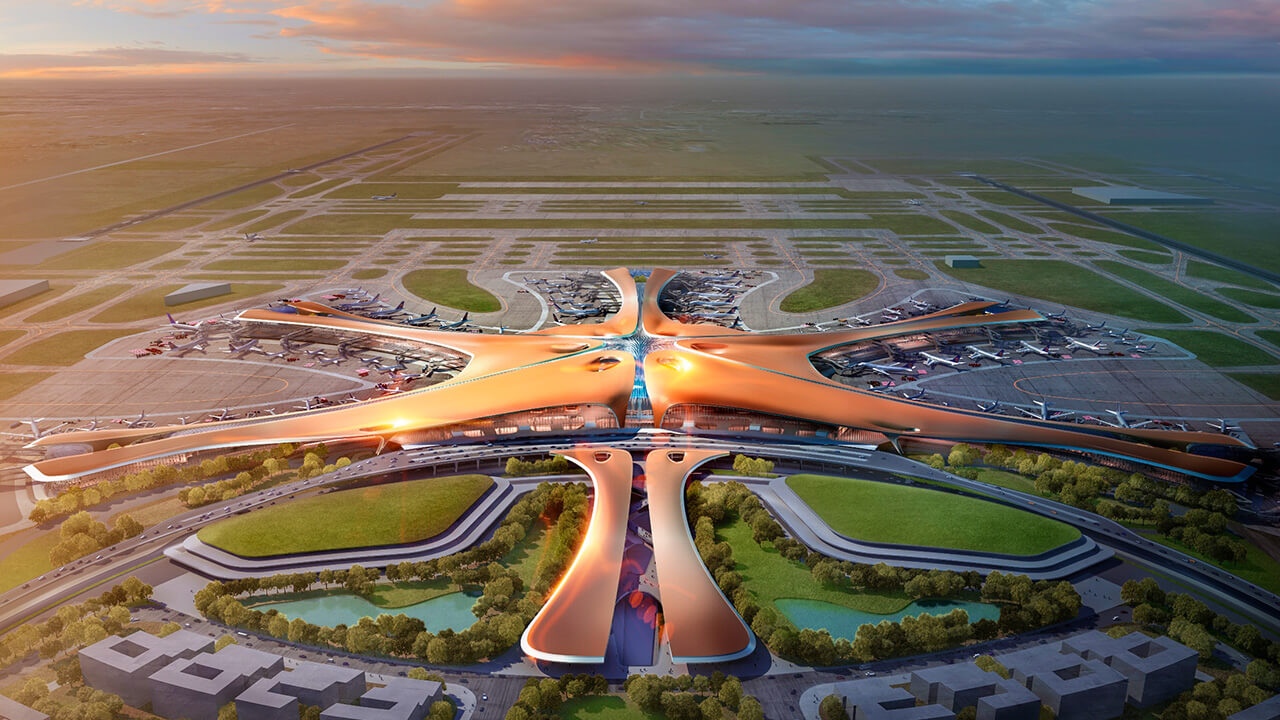Воздушные ворота любого государства — это его визитная карточка. Поэтому правительства многих стран не жалеют денег на строительство поистине колоссальных аэропортов, оснащенных по последнему слову техники. Такие объекты дают рабочие места тысячам людей, расположенные внутри магазины, отели и прочие объекты инфраструктуры приносят немалую дополнительную прибыль.
В нашем рейтинге мы собрали самые большие аэропорты мира по пассажиропотоку. А также расскажем вам о самом большом аэропорте в мире по площади.
Самые большие аэропорты мира по пассажиропотоку
10. Шереметьево (Россия, Москва) – 45,8 млн чел./год
 Среди крупнейших аэропортов России по пассажиропотоку безусловным лидером является московский «Шереметьево» имени А.С.Пушкина. В 2018 году он далеко обогнал «Домодедово» — второй самый большой аэропорт в Москве по количеству пассажиров (45,8 миллиона человек против 29,4 миллиона человек соответственно).
Среди крупнейших аэропортов России по пассажиропотоку безусловным лидером является московский «Шереметьево» имени А.С.Пушкина. В 2018 году он далеко обогнал «Домодедово» — второй самый большой аэропорт в Москве по количеству пассажиров (45,8 миллиона человек против 29,4 миллиона человек соответственно).
Однако, несмотря на внушительную для России цифру, «Шереметьево» далеко отстает от своих европейских и американских коллег. Там для вхождения в первую десятку нужно иметь пассажиропоток от 69 миллионов человек, как у французского аэропорта «Шарль де Голль».
9. Международный аэропорт Шанхай-Пудун (Китай, Шанхай) – 70 млн чел./год
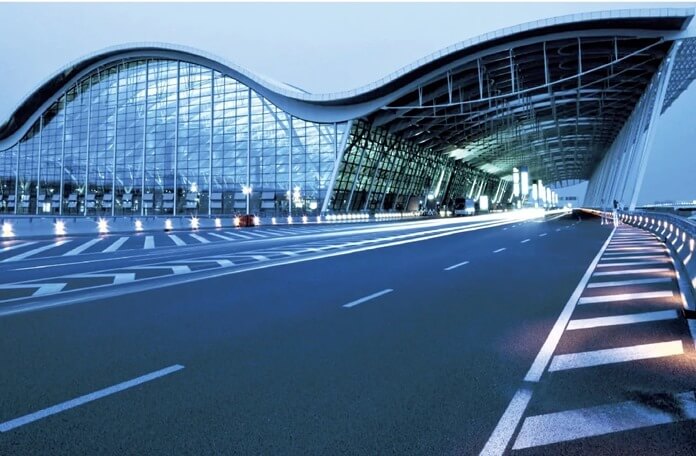
Этот аэропорт был открыт в 1999 году, чтобы ослабить нагрузку на другой аэропорт Шанхая — Хунцяо. С тех пор Шанхай-Пудун стал одним из самых загруженных аэропортов в Китае. Хунцяо по-прежнему является крупным аэропортом, но он обслуживает в основном внутренние рейсы, в то время как в Пудуне есть как внутренние, так и международные рейсы.
У руководства аэропорта грандиозные планы — обогнать Гонконг по пассажиропотоку в ближайшие пару лет. Для этого планируется построить еще один главный терминал, а также терминал-сателлит с двумя дополнительными взлетно-посадочными полосами, что позволит увеличить ежегодную пропускную пассажирскую способность Шанхай-Пудун до 80 миллионов человек. В прошлом году он принял 70 миллионов человек.
8. Международный аэропорт Гонконга (Гонконг) – 72,8 млн чел./год
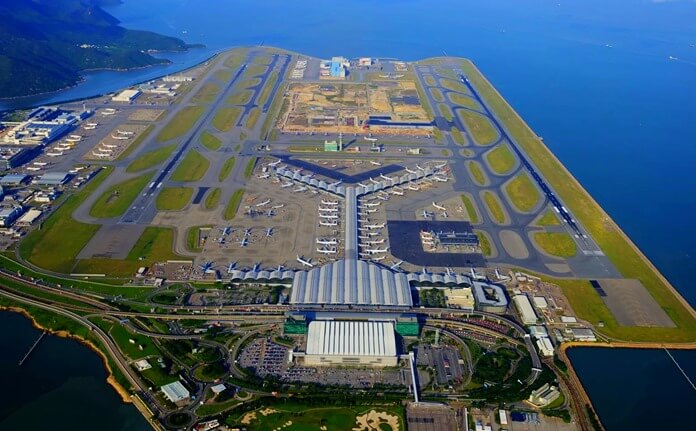 Этот крупный аэропорт с неофициальным названием Чхеклапкок, был построен вместо аэропорта Каи Так (бывший международный аэропорт Гонконга) и открылся в июле 1998 года. Каи Так, построенный в 1925 году, обладал лишь одной взлетно-посадочной полосой (она была общеизвестно опасной, и настоящим испытанием для любого пилота, который должен был приземлиться там).
Этот крупный аэропорт с неофициальным названием Чхеклапкок, был построен вместо аэропорта Каи Так (бывший международный аэропорт Гонконга) и открылся в июле 1998 года. Каи Так, построенный в 1925 году, обладал лишь одной взлетно-посадочной полосой (она была общеизвестно опасной, и настоящим испытанием для любого пилота, который должен был приземлиться там).
Новый аэропорт Чхеклапкок был спроектирован с учетом огромного количества пассажиров, и включает две взлетно-посадочные полосы и огромную зону обслуживания. В настоящее время он обслуживает более 1100 рейсов в день, в нем занято более 73 000 сотрудников, а также работает более 320 магазинов и 100 ресторанов. За прошлый год в международном аэропорту Гонконга побывали 72,8 миллиона пассажиров.
Он также получил внушительный набор наград, в том числе «Лучший в мире аэропорт» по версии Skytrax в 2001-2005, 2007-2008 и 2011 годах.
7. Хитроу (Великобритания, Лондон) – 78 млн чел./год
 Международные воздушные ворота британской столицы ежегодно принимают 78 миллионов пассажиров. Хитроу является самым загруженным аэропортом Европы.
Международные воздушные ворота британской столицы ежегодно принимают 78 миллионов пассажиров. Хитроу является самым загруженным аэропортом Европы.
Кстати, расположен аэропорт не очень удачно – взлетно-посадочные полосы оказались в низине, где часто собирается знаменитый лондонский туман. Правда, в случае задержки рейса пассажиры могут скоротать время в одном из лучших в мире магазинов Duty Free.
6. Международный аэропорт О’Хара (США, Чикаго) – 79,8 млн чел./год
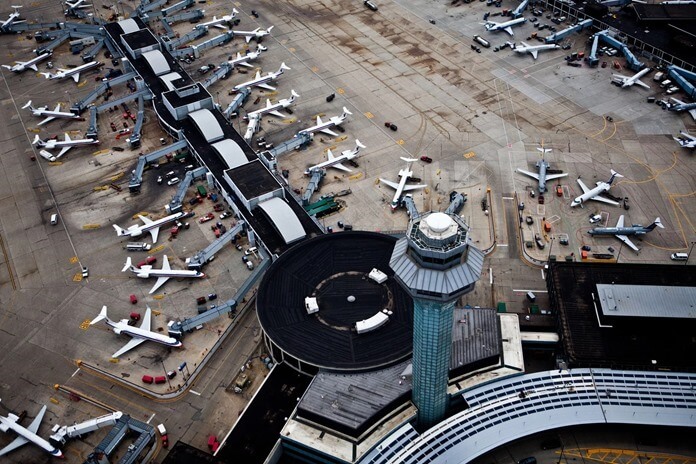 Международный аэропорт О’Хара, расположенный на северо-западе Чикаго, является третьим по величине аэропортом в США. В 2018 году через него прошло 79,8 миллиона пассажира, что сделало его шестым по загруженности аэропортом в мире.
Международный аэропорт О’Хара, расположенный на северо-западе Чикаго, является третьим по величине аэропортом в США. В 2018 году через него прошло 79,8 миллиона пассажира, что сделало его шестым по загруженности аэропортом в мире.
Фактически, О’Хара был самым загруженным аэропортом в мире до 1998 года, когда его вытеснил Хартсфилд-Джексон из Атланты.
О’Хара является очень важным стратегическим партнером для нескольких крупнейших авиакомпаний США. Здесь находится крупнейший хаб United Airlines, как с точки зрения ежегодных пассажиров, так и ежедневных рейсов. Также этот аэропорт является вторым по величине хабом для American Airlines и играет огромную роль в их бизнесе на Среднем Западе.
В 2017 году O’Hare был признан крупнейшим мега-хабом в США (и четвертым по величине в мире). Это означает, что в нем имеется максимально возможное количество соединений между входящими и исходящими рейсами в течение любого шестичасового окна.
5. Международный аэропорт Лос-Анджелеса (США, Лос-Анжелес) – 84,5 млн чел./год
 На пятом месте, с пассажиропотоком в 84,5 миллиона человек, находится международный аэропорт Лос-Анджелеса. Это второй по величине аэропорт в США и единственный аэропорт в мире, который все три американских перевозчика (American, Delta и United) выбрали в качестве хаба.
На пятом месте, с пассажиропотоком в 84,5 миллиона человек, находится международный аэропорт Лос-Анджелеса. Это второй по величине аэропорт в США и единственный аэропорт в мире, который все три американских перевозчика (American, Delta и United) выбрали в качестве хаба.
В мае 2017 года он также стал домом для первого в США частного терминала, расположенного в дальней части аэропорта, вдали от публики и папарацци. Знаменитостям нужно пройти всего лишь 70 шагов от терминала к самолету, тогда как обычным пассажирам потребуется свыше 2000 шагов.
4. Международный аэропорт Токио-Ханеда (Япония, Токио) – 85,2 млн чел./год
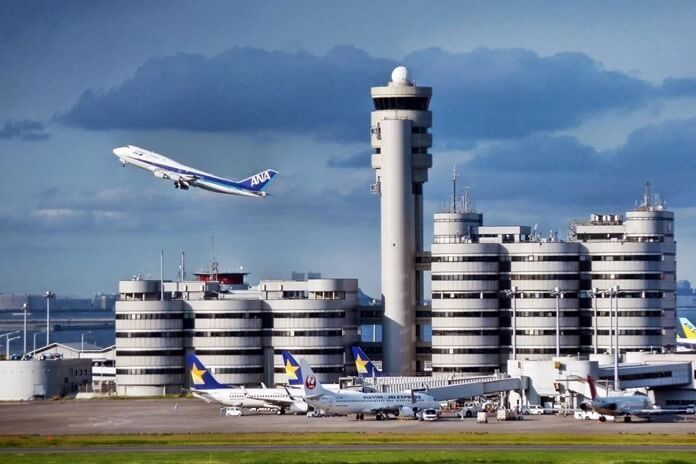 Первоначально этот аэропорт был предназначен для внутренних рейсов, в то время как международные принимал второй столичный аэропорт — Нарита. Однако в последние годы именно сюда перевели большую часть азиатских авиакомпаний, что сделало
Первоначально этот аэропорт был предназначен для внутренних рейсов, в то время как международные принимал второй столичный аэропорт — Нарита. Однако в последние годы именно сюда перевели большую часть азиатских авиакомпаний, что сделало
Международный аэропорт Токио одним из самых загруженных в Азии. Ежегодный пассажиропоток составляет около 85,2 миллиона человек.
3. Аль Мактум (ОАЭ, Дубай) – 88 млн чел./год
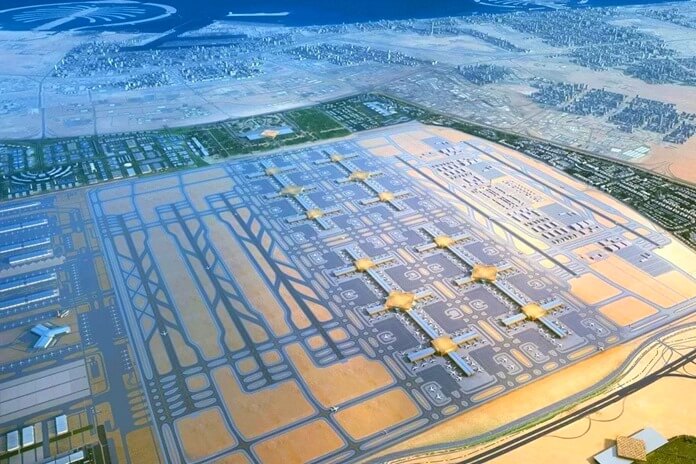 Проект стоимостью в $33 млрд. начал свою работу в 2010 году. В настоящее время аэропорт находится в стадии развития и после завершения всех работ, безусловно, станет крупнейшим в мире.
Проект стоимостью в $33 млрд. начал свою работу в 2010 году. В настоящее время аэропорт находится в стадии развития и после завершения всех работ, безусловно, станет крупнейшим в мире.
Площадь аэропорта вместе с объектами инфраструктуры – около 140 тысяч квадратных километров, что немного меньше площади государства Лихтенштейн. Аль Мактум – один из немногих аэропортов, способных принимать самые большие в мире пассажирские лайнеры Airbus A380.
К 2019 году пропускная способность аэропорта Аль Мактум составила свыше 88 миллионов человек в год.
2. Шоуду (Китай, Пекин) – 95 млн чел./год
 Второй по величине пассажиропотока аэропорт мира начал свою работу перед Пекинской Олимпиадой в 2008 году. Несмотря на сравнительно небольшую занимаемую площадь в 1,7 квадратных километра, аэропорт Шоуду принимает ежедневно более тысячи рейсов. Через него проходят свыше 95 миллионов человек.
Второй по величине пассажиропотока аэропорт мира начал свою работу перед Пекинской Олимпиадой в 2008 году. Несмотря на сравнительно небольшую занимаемую площадь в 1,7 квадратных километра, аэропорт Шоуду принимает ежедневно более тысячи рейсов. Через него проходят свыше 95 миллионов человек.
Аэропорт оснащен по последнему слову техники. Пассажирам доступен высокоскоростной wi-fi интернет, а сортировка багажа миллионов людей происходит полностью автоматически на подземном этаже аэропорта. «Изюминка» аэропорта – это зимний сад, построенный в зале ожидания, и повторяющий сады императорского дворца.
1. Хартсфилд-Джексон (США, Атланта) – 104 млн чел./год
 Среди самых крупных аэропортов мира ни один не может потягаться с аэропортом Атланты по пассажиропотоку. Наиболее загруженный аэропорт в мире принимает свыше 100 миллионов пассажиров ежегодно. В 2018 году эта цифра достигла 103, 9 миллиона человек.
Среди самых крупных аэропортов мира ни один не может потягаться с аэропортом Атланты по пассажиропотоку. Наиболее загруженный аэропорт в мире принимает свыше 100 миллионов пассажиров ежегодно. В 2018 году эта цифра достигла 103, 9 миллиона человек.
Все шесть залов аэропорта соединяет автоматизированная система перевозок пассажиров – это комфортабельные электропоезда, не требующие присутствия машиниста.
Кстати, в Штатах самолеты – самый популярный вид транспорта для дальних поездок. Местные авиакомпании устанавливают стоимость перелета, сопоставимую с затратами на наземный транспорт.
Самый большой аэропорт в мире по площади

Международный аэропорт Король Фахд, который находится неподалеку от города Даммам (Саудовская Аравия) раскинулся на 77 600 гектарах (776 кв. км), что делает все остальные аэропорты в этом списке похожими на автомобильный набор Lego по сравнению с настоящим автомобилем.
В начале 90-х годов в этом аэропорту дислоцировались самолеты, принимавшие участие в конфликте в Персидском заливе. А в 1999 году он был переориентирован для коммерческого использования.
 Саудовский аэропорт по размеру превышает некоторые из самых маленьких стран в мире, например, такие государства как Бахрейн и Гренада. Но вот забавный факт: только 3675 гектаров этой площади (то есть менее 5% доступного пространства) используется для помещений аэропорта.
Саудовский аэропорт по размеру превышает некоторые из самых маленьких стран в мире, например, такие государства как Бахрейн и Гренада. Но вот забавный факт: только 3675 гектаров этой площади (то есть менее 5% доступного пространства) используется для помещений аэропорта.
Если бы мы указали фактический размер аэропорта, он никак не мог бы претендовать на звание «самый большой аэропорт».
Из-за своего неудобного местоположения международный аэропорт имени короля Фахда мало загружен с точки зрения пассажиропотока (около 5 миллионов пассажиров в год). Таким образом, можно сказать, что самый большой аэропорт в мире — самый непродуктивный. Зато он гордится тем, что обслуживает королевскую семью Саудовской Аравии, для чего был специально построен терминал Royal.
📚 Не пропустите интересную информацию:
-
В Казахстане обнаружено «крупнейшее» месторождение редкоземельных металлов
В Казахстане обнаружено крупнейшее месторождение редкоземельных металлов, содержащее около миллиона тонн элементов, которые считаются жизненно важными для будущей экономики, сообщила в среду эта центральноазиатская страна.... -
Объяснение концовки 3-го сезона «Мира Юрского периода: Теория хаоса» и краткий обзор финала: будет ли 4-й сезон?
Концовка 3-го сезона «Мира Юрского периода: Теория хаоса» в основном была посвящена мести Хендлера Сойоне Сантос за то, что она отделила ее от Атроцирапторов. Но... -
12 самых опасных районов мира, где постоянно происходят бандитские войны
По всему миру некоторые районы превратились в запретные зоны, где процветает насилие, бандитские разборки и высокий уровень преступности. Города, которые когда-то были туристическим раем, со... -
Ниихау — Гавайский остров, полностью закрытый для внешнего мира, со специальным разрешением на въезд
Ниихау, самый загадочный и недоступный остров Гавайев, интригует как своей экзотической красотой, так и строгими правилами доступа. Расположенный всего в 17 милях от берега Кауаи,... -
7 крупнейших астероидов, упавших на Землю в истории
Первые сто миллионов лет существования нашей Солнечной системы были похожи на сцену из фильма ужасов, полную хаоса и гигантских столкновений. Зарождающаяся Земля постоянно подвергалась ударам...

